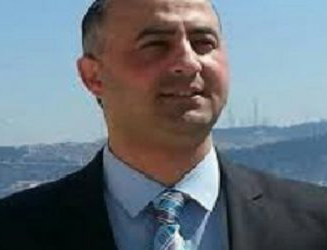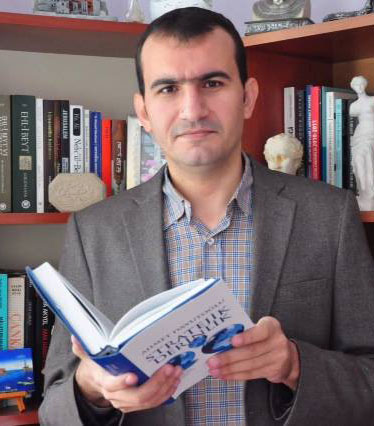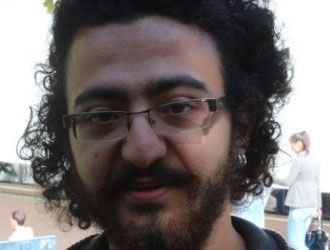Abstract: Terrorism financing provides funds and materials for spreading terrorist activity. Traditionally, terrorists need financial support to perform their activities and to achieve their goals. Type of terrorist groups and related threats have changed over time, but the basic need for terrorists to raise, move and use funds has remained the same. However, scope and structure of terrorist organizations have evolved. Terrorists have long found shelter in some countries nowadays, and in many cases worked hand in hand with the governments. Besides, terrorists are gradually developing new methods and capabilities to attain their goals, by also improving the efficiency of existing ways. This article will analyze terrorist financing methods and phenomena, and will touch on counter terrorism financing process.
Methodology
In this study, traditional methods on terrorism financing and counter-terrorism financing process were thoroughly analyzed. This paper involves qualitative study and technique of literature review. In the next stages, the main parameters of the study were defined by interpreting data. There are also some case studies in order to reinforce the arguments.
Terrorism: An Overview
Terrorism consists of the components containing violence and extremist ideas such as religious fundamentalism, which has become involved in terrorist action. Terrorists use specific tactics that exploit fear and terror. Basically, we can classify two elements the process of terrorist activity. The first element is coercion by using violence or spreading terror. This is the most important stage of terrorism. The second element must be found within the answer of the question of ‘what do terrorists want?’. This is a much more complex element of the process. Directly, this element associated with getting the message across somebody or something.
Terrorism is mostly equated with non-state actors or groups that are not responsible to a sovereign goverment. As an asymmetric form of a conflict, terrorism as an act of violence is not new and it has been used since the early times in historical period. However, it is explicit that the majority of terrorist attacks have happened since the end of the twentieth century. Modern terror began in Russia in the 1880s and a generation later the wave was completed. Anarchists initiated the first wave and afterwards other three waves of terrorism appeared in world history.1 Nevertheless, unlike crime or poverty, international terrorism is a recent phenomenon. In the post-Cold War era, terrorist organizations have become a huge international threat beyond the national borders along with expanding globalization worldwide. For this reason, countering terrorism has been carried out in all dimensions, particularly financial, social, military, legal and political. Especially in period of 9/11 attacks, countering terrorism financing has stood out within international agenda as soon as the U.S. has started a war against terrorism. So, indeed, terrorism inholds several methods in order to subsist. The financial management of these extremist activities explores the use of funds by terrorist groups, not only for operational needs but also for recruitment, training, propaganda and specific techniques used to manage these funds. Based on this inference, terrorism financing provides funds and materials for spreading terrorist activity. Traditionally, terrorists need financial support to perform their activities and to achieve their goals. Type of terrorist groups and related threats have changed over time, the basic need for terrorists to raise, move and use funds has remained the same. However, scope and structure of terrorist organizations have evolved. Nowadays, terrorists have long found shelter in some countries, and in many cases worked hand in hand with the governments. Today several countries continue to provide tacit support in an attempt to finance terrorism. In addition to all these, terrorists draw on illegal activities such as money laundering, drug trafficking, kidnapping, assassinations, bombings, hijackings etc. From this point of view, terrorism can be seen as an effective tactic for the weaker side in a conflict. Therefore, it confers coercive power with many of its advantages and disadvantages. It does take its deterrence from the nature of its carrying out the terrorist activity. However, in fact, its deterrence is a leverage against weak states, not powerful ones.
Terrorism is a distinctive form of modern political agency, intended to threaten the ability of a state to ensure the security of its members.2 Nowadays, most academics have essentially focused on the terrorists’ goals and actions. However, first of all, it is very significant to understand that terrorist activities are the result of the extensive preparation process. It must be known that the wider financial support lies behind this extensive preparation process. In addition to this, likewise, ammunition and arms aid are remarkable in this respect. Another important issue is ideology. Ideology has always been a source of motivation for terrorists. The constituent of ideology and motivation for terrorism has similarly influenced their objectives. The type of target will usually indicate the source of their ideology and motivation. Their selected targets are widely symbolic and they often target vulnerabilities because terrorists are ineffective to combat regular army, therefore, they tactically follow guerilla warfare or asymmetric warfare methods.
As a consequence, terrorist organizations vary in size, structure, capabilities, motivations, operational reach and recruitment. Despite differences among terrorist groups, as well as between individual terrorists and supporters, there is always a common need for financial means to transform plots into terrorist acts and to support the full range of acitivities that terrorist organizations engage in.3 From this standpoint, in the next chapters, traditional methods on the financing of terrorism and counter terrorism financing process will be analysed.
Traditional Methods On Terrorist Financing and The Future of Terrorism
At first, it should be noted that there are some key concepts about traditional methods of terrorism. In terminology, a risk and moment of danger result from three factors: Threat, vulnerability and consequence. A threat is a person or group of people, object or activity with the potential to cause harm to the state, society, economy etc. Secondly, vulnerability comprises those things that can be exploited by the threat or that may support or facilitate the activities. In this context, it could include the wider financial system and mechanisms. This slant looks at vulnerability seperately from threat and includes factors that represent weaknesses in countering the financing of terrorism. Finally, consequence refers to the impact or harm that terrorism financing may cause. It includes the effect of the underlying criminal and terrorist activity on financial systems and institutions, as well as the economy and society more generally.4
Terrorist organizations use funds for operations, training, recruitment, propaganda, salaries and member compensation. Like other organizations around the world, terrorist groups must have the skills to obtain and to use the financial resources required to achieve their aims. Managing resources and the financial management of international terrorism seriously requires planning and accounting for all resources. Terrorist financial management generally happens within geographic safe havens or within secure social networks, making it very difficult to penetrate.5
There are two main traditional methods on terrorist financing. The first way is the financial support from countries, organizations or individuals. The second one includes money laundering process. This money laundering process may not be directly connected with terrorism financing, but it is one of the most effective methods for financing terrorism itself perhaps. Money laundering is the process of receiving illicit funds and afterwards converting it into clean money. In this sense, terrorists integrate into the financial system their revenues and funds which obtain via unlawful means by utilizing money laundering methods and they provide sources of income by this way. Recently, the current regulations to prevent money laundering have also been implemented in order to prevent terrorism financing.6 This approach has gained momentum with the September 11 attacks and the method of this struggle has been adopted.
Case Study 1: Standard Chartered – estimated £191.8 billion
In 2012, the British Bank Standard Chartered was accused, by New York’s Department of Financial Services (DFS), of helping the Iranian government to circumvent U.S. money laundering regulations to the tune of an estimated £191.8 billion over 10 years. The bank paid a civil penalty of £262 million in 2012 by the DFS and the U.S. Department of Justice for failures in its anti-money laundering controls and for violating U.S. sanctions on Iran, Burma, Libya and Sudan. It then had to pay a further £232 million in civil penalties in 2014 by the DFS for the bank’s internal controls failing to flag suspicious transactions. This arose from the regulator deeming that the bank had not improved its systems after promises in the 2012 settlement. It was also forced to discontinue certain activities such as exiting certain high-risk customers at its United Arab Emirates branch.
Source: ICT Wilmington Risk and Compliance.
Money laundering usually involves three paces of transactions: Placement, layering and integration. The placement stage reflects the initial entry of the dirty cash money. This stage usually serves two purposes. Firstly, it acquits the criminal of holding and guarding large amounts of bulky of cash and it places the money into the legitimate financial system. Layering (or structuring) stage comes after placement. The layering stage inholds vast complexity and it often entails the international movement of the funds. The main purpose of this stage is to seperate the dirty or illicit money from its source. This is done by the sophisticated layering of transactions that obscure the audit trail and sever the link with the original crime. The final stage is integration. There are many different ways in which the laundered money can be integrated back with the criminal. However, the principal aim at this stage is to reunite the money with the criminal in a manner that does not draw attention and appears to result from a legitimate source.7 As a result, money laundering is an integral constituent of terrorist and other criminal activities that generate profits for terrorists and criminals. In this situation, terrorist organizations usually have three objectives to generate an income for their illegal activities. These are to meet the expenses connected to their illegal activities (1), to invest their illegal proceeds within future planning for their illegal activities (2) and to possess handsome profits for their illegal activities (3).
The global efforts for anti-money laundering began in the early 1990s and they are built on some strategies, firstly, by uncovering the financing methods and the web of financial networks. To deal with this, capability of financial intelligence collection is very significant. One of the primary aims of financial intelligence is to detect financial transactions that may involve money laundering process or other criminal activities. Secondly, it is necessary to actualise critical steps to debar from the means to act.
As noted above, money laundering process and terrorism financing might be seen as distinct activities. However, assets of terrorist organizations and other criminal assets denote the same threats to financial systems and mechanisms, also public safety. Besides, although international institutions argue that terrorist financiers are working on new modalities, in fact, the opposite is true. Terrorist financiers are performing traditional methods such as hawala*, trade based money laundering, particularly in countries are impotent in combating money laundering.8 *Hawala is “money transfer without money movement” according to Interpol’s definition. Transactions between Hawala brokers are done without promissory notes because the system is seriously based on trust.
Criminal activities are nowadays an increasingly more significant part of the economy of terrorism and these activities provide large amount funds for terrorism. In traditional methods on terrorist financing, another example is that collecting funds from a diaspora has become an important source of financing way. For instance, The IRA has drawn a large part of its revenues from the Irish community in the United States, and this has also been done by the GIA in Algeria, by the Al-Qaeda, Sri Lankan rebels, Armenian terrorists, seeking funds from compatriots who are on exile or expatriates for economic reasons. Charitable organizations play a vital role in this mode of financing, which explains why they are particularly targeted in current strategies.9
Case Study 2: Financing through the financial system
ZT, an international NGO/Charity organisation headquartered in the Middle East, sought to open an account in Bank A in Nigeria. While carrying out due diligence on ZT, Bank A discovered that the organisation and one of its directors had been indicted in a case involving terrorist financing in two countries. A Suspicious Transaction Report (STR) was immediately filed with the Nigeria Financial Intelligence Unit (NFIU). Analysis of ZT’s bank statements and transactions established that ZT’s transactions were inconsistent with the profiles of its accounts. There had been frequent cash deposits and withdrawals, including those from domestic ATMs, by individuals with no apparent connection to the charity and mostly in areas with a high incidence of terrorist activity within Nigeria. The analysis further revealed that there had been transfers of funds from ZT’s accounts into the accounts of individuals with whom ZT had no apparent relationship. Cash deposits were structured and made through multiple branches of the same bank. Funds transfers were from a foreign jurisdiction by a national of a country known to be state sponsor of terrorism; and there had been a series of transfers into the accounts by the charities headquarters in the Middle East. Subsequent investigations established that ZT had operated in Nigeria for an extended period and had maintained multiple bank accounts in three different Nigerian banks. ZT was also affiliated with another NGO known to have supported terrorist groups, including Al Qaeda. Finally, it was established that ZT’s charity operations supported Hamas, a Palestinian extremist organisation, and Gama’a al-Islamiyya, an Algerian terrorist group. The frequency of withdrawals from ZT accounts, especially in the states known for Boko Haram activities, raised concerns about the ultimate use of these funds. The promoters of ZT claimed to be paying the salaries of itinerant Islamic clerics in Nigeria.
Source: FATF Report, October 2013.
As noted above, one of the traditional ways of terrorist financing is hawala. In this process, financial transactions and materials have been supplied by an underground network established in a country. Hence, Somali hawala networks may set a good example. Somali hawala networks exist through the Horn of Africa and are the living spaces for most Somalis and their diaspora. Since the series of terrorist attacks in Nairobi and particularly the attack against Garissa University College in 2015, Kenyan authorities have suspended licences of 13 major remittance firms alongside focused efforts against Al-Shabaab sympathizers.10 As it is seen, detection of money laundering activity through legal provisions is functional to prevent financial terrorism, especially cash couriers inclined money laundering trends, in other words illicit cash couriers. Cash courier refers to an individual who physically transports, mails or ships monetary instruments. This definition does not include individuals engaged in money remittances as licensed business.
Moreover, in order to comprehend terrorist financing methods and gain knowledge about the structure of terrorist organizations, analysis of social networks of terrorism constitutes a critical point. Such a knowledge is significant for developing effectual combating methods against international terrorism. Recently, terrorists utilize this tool (social media) to solicit online donations from their symphatizers and unsophisticated donors who believe they are giving support a humanitarian or charitable activity.
Modus Operandi and Combatting Terrorism Financing
The most important stage of countering terrorism financing is to detect the financial resources of terrorist organizations. Financial managers and facilitators of terrorist groups could be targeted with financial sanctions, law enforcement or military operations. Terrorist organizations are increasingly employing new innovative methods with new technologies. In this direction, some national counter terrorism financing regimes stand out such as Canada. The efforts of the Canadian governments to combat terrorism financing have been conducted within the wider framework known as the anti-money laundering and anti-terrorist financing regime. The regime is based on three pillars: Coordinating policy (1), prevent money laundering (2) and disrupting money laundering and terrorist financing (3). The first pillar constitutes framework of the regimes. A core element of this framework is the national legislation. The Canadian Legislation dates back to the “Proceeds of Crime Act” (anti-money laundering) from 2000. This act established the Canadian Financial Intelligence Unit. The second pillar constitutes the prevention of terrorist-linked funds and the third one represents the detection and disruption of transactions linked to money laundering, terrorist financing and other criminal activities in this sphere. Moreover, this regime has a terrorist listing process to freeze terrorist assets. In June 2015, Canada had totally 90 terrorist entities, and in September, more than 50 entities were listed based on terrorism financing related activities.11
Like all criminals, terrorists and their supporters are closely interested in using technologies which maximize anonymity and are relatively cost effective. For this reason, financial and cyber intelligence are necessary components for all dimensions of counter terrorism. In addition to these, in order to benefit from financial intelligence, all intelligence agencies and operational authorities must continue to enhance specific mechanisms to share information on emerging risks and global threats.
Conclusion
As a consequence, terrorists use multiple methods and normally detection of financial transactions of terrorism has gradually become difficult. There are also apodictic times when national governments became involved in terrorism, or utilized terror to accomplish objectives of governments. Indeed, state support to terrorism is explicit rather than being moot point today. This factor also complicates that process in terms of diplomatic mechanisms in relations among states.
In the modern information age, terrorists are seen more integrated with sub-state organisms such as chartered companies, criminal organizations and especially national governments. Terrorists are gradually developing new methods and capabilities to attain their goals, by also improving the efficiency of existing ways. However, the measures taken and the capabilities of some powerful states have generally sufficed to deter these threats although today’s terrorism is trying to adapt increasing modern technology. Nevertheless, on the basis of international community and in global level, the mobilization of all governments and the extensive collaboration must be consistently pursued.
Alparslan ULUHAN
FOOTNOTES
1 David C. Rapoport, “The Four Waves of Modern Terrorism”, 2002 Spring, http://international.ucla.edu/media/files/Rapoport-Four-Waves-of-Modern-Terrorism.pdf.
2 Charles V. F. Townshend (2002), Terrorism: A Very Short Introduction, Oxford University Press, p. 6.
3 FATF Report, “Emerging Terrorist Financing Risks”, October 2015, p. 9, http://www.fatf-gafi.org/media/fatf/documents/reports/Emerging-Terrorist-Financing-Risks.pdf.
4 Ibid., p. 8.
5 Ibid., p. 12.
6 Engin Akın (2009), Terör ve Terörün Finansmanı Suçu, Ankara: Adalet Yayınevi, p. 411.
7 “Money Laundering: A Three-Stage Process”, https://www.moneylaundering.ca/public/law/3_stages_ML.php.
8 U.S. Department of State, “Anti-Money Laundering / Counter Terrorist Financing”.
9 J.F. Thony (2000), “Money Laundering and Terrorism Financing: An Overview”.
10 http://www.unhcr.org/cgi-bin/texis/vtx/refdaily?pass=52fc6fbd5&id=55260d235.
11 Magnus Normark & Magnus Ranstorp, “Understanding Terrorist Finance”, December 18, 2015.
























































